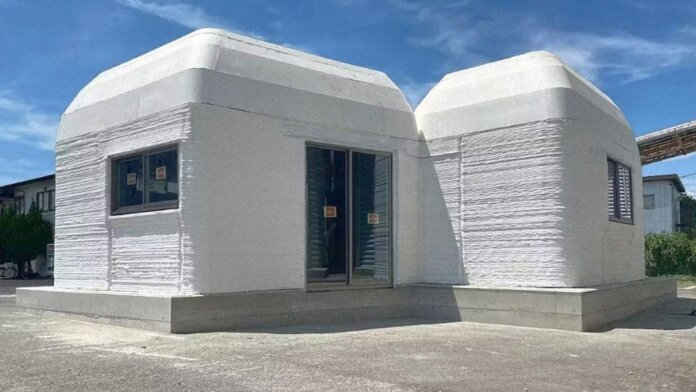3D printing is becoming more popular as a construction method, with multiple companies building entire 3D-printed neighborhoods in various parts of the world. But the technique has come under scrutiny, with critics saying it’s not nearly as cost-effective nor environmentally friendly as advocates claim. A Japanese company called Serendix is hoping to be a case to the contrary; the company is 3D printing tiny homes that cost just $37,600.
Admittedly, the homes are quite small at 538 square feet; that’s about the size of a large studio apartment. But their design, called Fujitsubo (“barnacle” in Japanese) includes a bedroom, a bathroom, and an open-concept living/kitchen space.
Likely owing to the island nation’s compact geography, the Japanese tend to live in smaller spaces than Americans or Europeans; the average home size in Japan is 93 square meters (just over 1,000 square feet). In the US, meanwhile, we take up a lot more space, with our average single-family house occupying 2,273 square feet. The company says the design was created partly to cater to demand from older married couples wanting to downsize during their retirement.
The first home Serendix completed in Japan was called the Sphere, though at 107 square feet it was more a proof of concept than an actual house. Printing was completed in less than 24 hours, and the structure was up to code for both Japanese earthquake and European insulation standards. The company said they envision the Sphere having multiple purposes, including providing emergency housing or serving as a stand-alone cabin or hotel room for vacationers. Its cost to build was $25,500.
Fujitsubo is a bit different in that its walls are printed in separate sections that are then attached to its foundation with steel columns. The roof is made of panels that are cut by a computer numerical control (CNC) machine, in which pre-programmed software controls the movement of factory tools and machinery. Serendix said it took 44.5 hours to print and assemble the home.
One of the issues cited by detractors of 3D-printed construction is that the method isn’t feasible in dense urban areas, which tend to be where there’s the most need for low-cost housing; there’s not a lot of extra space or empty land available in big cities, and even if there is, it’s not efficient or cost-effective to plunk down a 3D-printed home.
Serendix gets this, and they’re aiming to stay away from building in big cities, focusing instead on small towns where there’s more land available. Given the exodus from city centers that happened during the pandemic and the increased number of people who are now working remotely, the company believes there could be a strong market for its homes in non-urban locations.
Once they receive safety approvals, Serendix plans to sell its first six Fujitsubo homes for the equivalent of $37,600—well below the average price of a home in Japan (and below the price of many cars). The company currently has five 3D printers, and it says each one can build up to 50 homes in a year. It’s aiming to acquire 12 more printers, giving it the capacity to build as many as 850 houses in a year.
“In the automotive industry 40 years ago, the price reduction of products began due to innovation of the manufacturing process using robots,” the company said in a statement. “We believe that the 3D-printed house is the beginning of complete robotization of the housing industry.”
Image Credit: Serendix



